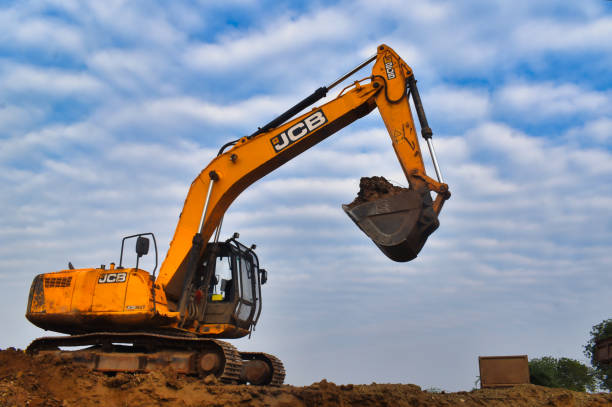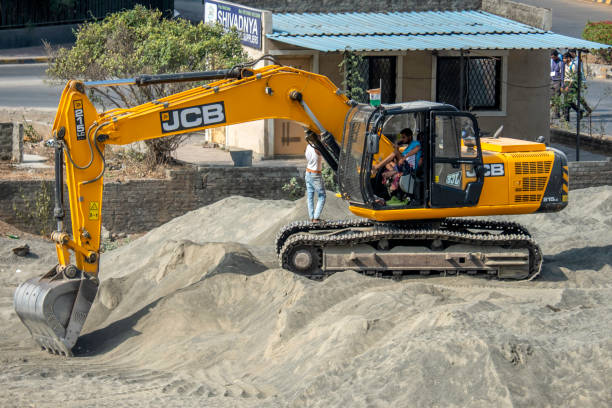Innovation in Demolition: Latest Tools and Techniques for Efficient Work
Have you ever stood at a demolition site and wondered about the unusual finesse adopted in the process of breaking things apart? It's quite a spectacle, isn't it? After all, there's an undeniable thrill to witnessing the careful chaos of controlled devastation. But have you ever paused to think about the innovation rooted in this raw power and precision? Let's delve into this excitingly unusual world, as we dig deep into the latest tools and techniques in demolition.
Today, in the era of technological breakthroughs and constant innovation, even the field of demolition is not left untouched. The bulldozer and wrecking ball approach has gradually given way to new high-tech equipment and advanced methodologies. But what are these innovations? How are they changing the face of the industry? And more importantly, how do they promise more efficiency, safety, and sustainability?
In this blog post, we will unmask the innovative strides in the demolition industry. Diving into the myriad of new tools and techniques, we will take a closer look at how these advancements are redefining the traditional principles and forging a new path for better, faster, and safer demolition.
The Evolution of Demolition Technology
Change is the only constant, and nothing justifies this adage better than the growth of technology in the demolition industry. We've moved away from manpower and sledgehammers, embracing the advent of sophisticated machines and cutting-edge tech. This section decodes this fascinating evolutionary journey.
The wrecking ball, once a symbol of the industry, has become outdated as methods have evolved beyond brute strength. Today, implosion, a process where explosives selectively remove a building’s structural supports–is now a preferred technique. This shift is not only about speed but also about precision.
The focus today is more on selective or deconstructive demolition where buildings are carefully deconstructed preserving and recycling valuable elements. This change of tack has been primarily driven by a combination of sustainability concerns and economic factors.

New Tools On The Block
With the dawn of innovative tools and gadgets, the concept of 'controlled destruction' has taken root. Let's look at a few innovative tools remodelling the face of the demolition industry.
Diamond wire saws, a latest entrant, use wire coated with diamond dust for cutting through large structures. This tool offers precise cuts with less vibration compared to traditional saws. Meanwhile, hydraulic excavators, another impressive tool, is bestowing demolition with greater control and flexibility.
Robotics is another powerful addition to the industry, aimed at enhancing safety and precision. Rising Phoenix-like from the debris, mini-robots like the BoreRunner and Brokk are gaining popularity for their immense contribution in confined spaces.
You Must Watch: The Integral Role of Safety Procedures in Commercial Demolition
The Power of Technique
Innovative techniques complement these new-age tools, ensuring efficiency and safety. For instance, the top-down method, where floors are demolished from the top downward level by level, reduces dust and vibration. It's not only efficient but also safer.
The quiet demolition technique, using hydraulic breakers, shears, and crushers, ensures less vibration, noise, and dust, allowing work in populated areas. Additionally, processes like concrete bursting and crushing, employing hydraulic force, are becoming more prevalent, owing to their high efficiency and low noise.
The Sustainability Impact
Demolition’s environmental impact is significant, and hence, innovation is now being steered towards green demolition. This drive has led to deconstructive demolition where structures are dismantled piece by piece, and the materials are salvaged for reuse.
Furthermore, the emphasis on recycling has led to the invention of futuristic tools like 'material handlers,' which sort through the rubble to recover valuable materials. Not only does this reduce waste, but it also saves resources by reusing materials.

The Futuristic Leap
The future of demolition looks promising, with 3D simulation making an entrée. Virtual demolition enables error identification and rectification, even before the actual process begins. Besides, the rise of Artificial Intelligence and Machine Learning may soon equip robots with intuitive capabilities, making complex and dangerous demolition tasks safer.
Conclusion
In conclusion, the world of demolition is not all about bulldozers, wrecking balls, and heaps of rubble. It's a complex, multi-faceted field that’s evolving rapidly, embracing innovation at every juncture. We stand at an exciting crossroads of technology-powered demolition which promises not just efficiency and safety but also sustainability.
The demolition we witness today is not just 'controlled destruction'; it’s rather a well-orchestrated ballet of precision, strategy, and technique. As we transition from wrecking balls to robots, and implosions to green demolitions, the future is set to become even more thrilling, opening up new chapters of innovation in the world of demolition.






No comments